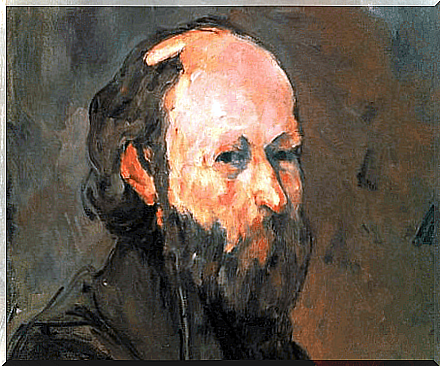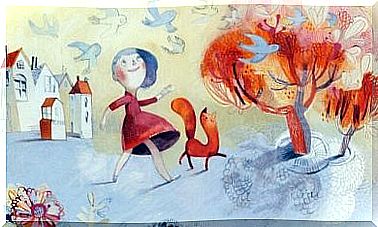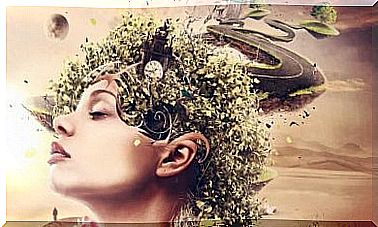The Monsters Of Reason: Psychology Of Black Paintings By Goya

The psychology of Goya’s black paintings remains an enigma. This set of mysterious and horrific paintings that decorated the Quinta del Sordo was created through a unique cosmogony, the product of a tired mind, at times desperate and determined in turn by a historical context marked by repression.
Now, was the torment suffered by Francisco de Goya the result of a psychological disorder? Or was it perhaps the result of that desperate patina that brought it the age, deafness and immanent violence of a troubled Spain?
Maybe it was the combination of it all. We cannot ignore how the creative universe of each artist works. The misfortunes of life are reflected in each canvas and even in the choice of color range.
The fourteen works that make up the so-called black paintings represented a notable change in his career. He went from light to shadow. He was the master of color and ended up living in a house where darkness stained its walls.
He, who had been the most remarkable portrait painter in Spanish Enlightenment society, ended up decorating his house with distorted, burlesque and demonic faces.
These canvases may have served to overturn his feelings, his thoughts and all the horrors seen in the past. Thus, and almost without knowing it, Goya would anticipate contemporary painting. This intentional distortion and this hue in which the darkness of a tormented soul vibrated gave way to expressionism.
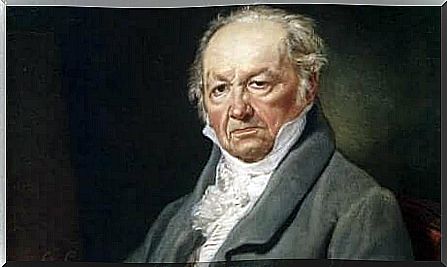
Psychology of Goya’s Black Paintings
Mercury vermilion, orpiment, lead white, vinewood carbon black, Prussian blue and various types of ocher. These are the pigments that Francisco de Goya himself prepared and which were used to create these works of the Quinta del Sordo. Thanks to various historical documents and testimonies of the time, we even know where the paintings were.
On the floor of the house were two strangers, the Holy Office, Asmodeus, a dog and two witches, Atropos, two men and two women .
The darker and overwhelming ones were curiously prepared in the dining room, located on the ground floor and used for social events. There was Saturn, the pilgrimage of San Isidro, El gran cabrón, La Leocadia, Dos viejo, Judith and Holofernes.
He didn’t care too much that the few visits he received were shocked by these images. Nor that he could be denounced. We cannot forget that Goya has always been this uncomfortable character for the Inquisition, for any ecclesiastical institution which saw in him an artist who did not hesitate to portray the perversions of those who abused power.
One of the goals of Goya’s psychology of black paintings is to find out what prompted him to do them. We didn’t just ask about his mental state, whether or not he had a disorder.
One of the doubts is whether he painted them out of pure emotional need, out of simple pleasure, or whether he wanted to leave something to posterity (and in particular to his grandson, to whom he bequeathed the Quinta del Deaf).
Let’s analyze some aspects of his work to understand his inner world.
The dream of reason produces monsters: Susac syndrome
To understand the Goya of Black Paintings, it is interesting to stop first at Caprices . These 80 engravings already give us a clue about the change in the life of the Aragonese artist. At that time, his autoimmune disease was already present.
She is known as Susac syndrome and manifested at the age of 46, which weakened her physical and psychological health. The headaches were constant, as well as the dizziness and visual disturbances… All this created a new pigment in the art of the Aragonese master: that of darkness and anguish.
One of the neurological sequelae of this rare disease was undoubtedly deafness. His sensory powers were distorted, they lost verve, light, sound, hope… Like this society in which he was immersed.
Los Capricho s was the first approach to the unconscious, to this inner world in which to capture like no one else the grotesque, the monstrous, the fantastic …
In these engravings, Goya brought to us the reflection of the superstitions of the simple people of the time. Those who believe in demons, witches and ghosts… nocturnal creatures that have invaded the dreams of the enlightened.
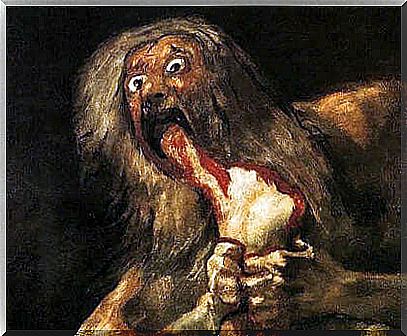
The delirium tremens of a bright but sick mind
Much of the work of Francisco de Goya (1746-1828) dwells in disturbing figures. Was it a reflection of a mental disorder? Absoutely. It was the exceptional creation of an artist who reflected like no other the unreason of a degraded society between which he himself lived… and which despaired him.
Few figures of art conveyed inner turmoil, loneliness, fear and despair so well. When Goya arrived at his country house La Quinta del Sordo, memories still boiled in his mind, the sound of executions, the pain of exile, the burn of disloyalty …
As Dr. Ronna Hertzano of the University of Maryland explains, Susac syndrome causes inflammation of the brain. Something like this causes hallucinations and a lower blood supply to the eyes and ears. Hence deafness, vision problems, suffering …
Interpretation
In The Black Paintings there is no light because there was no hope for Francisco de Goya. He was a desperate man suffering in such a chaotic world. His Saturn devouring his son or Judith and Holofernes were later these mythological figures that Freud would use for his theories.
The symbolic narrative of these latter works does nothing more than represent the most sinister and atavistic of human beings. In other words, our darkest records.
Goya only connected with them to shape them. Finally, it was the channel that brought us the darkest of our nature. These shadows that we don’t always like to see.
